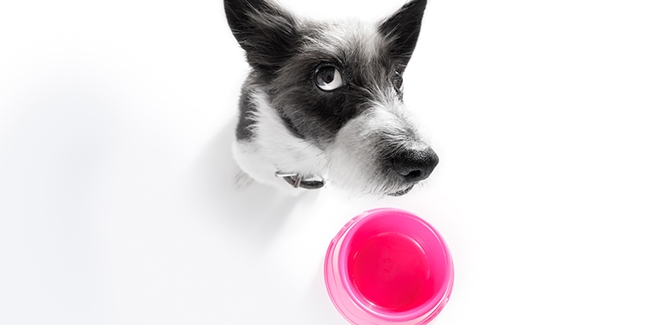Is your dog’s water bowl half empty or half full?

How can you tell if a dog is a pessimist or an optimist?
Check his paws.
A recent study indicates that a dog’s paw preference (righty or lefty) can be a predictor of how well he responds to and deals with emotional and environmental stress. Which, in turn, can be a predictor of how at risk he is for various other welfare issues. The study, conducted by researchers at Queen’s University in Belfast, Northern Ireland used a simple Kong test to asses dogs for paw preference and how it might relate to their tendency toward optimism or pessimism.
A medium-sized Kong toy was used in the test. The toy was filled with moist dog food and then frozen.
Each dog was tested after going 4 hours without food. The Kong was placed on the floor front of them. As the dogs tried to stabilize the Kong so they could to get at the food inside, researchers recorded their actions. Paw preference was determined by which paw the dogs used to try to stabilize the toy.
After determining paw preference, researchers placed bowls of food at different points around the room. Then the dogs were led to the bowls and shown that they contained food. Once the dogs learned to go to the bowls with food in them, other bowls were placed in other locations around the room. Some bowls contained food, some didn’t. There was no pattern to the placement, and no pattern as to which bowls contained food and which ones didn’t.
Researchers then measured how long it took each dog to approach the food bowls in their new locations. Dogs who favored their left paw were slower to approach food bowls in the new locations regardless of whether there was food in them or not. Dogs who favored their right paws were quicker to approach food bowls in the new locations.
In other words, the lefties were more pessimistic about the odds of finding food in those bowls, and dawdled. The righties were more optimistic, and moved faster.
The researchers say that’s because in dogs, each side of the body is controlled by the opposite hemisphere of the brain, just like humans. The left side of the brain inhibits fear, so it’s more likely to encourage exploration of the world and new experiences. The right side of the brain is more likely to process fearful information, and promote avoidance of new experiences.
So, left-pawed dogs are more likely to use the right side of the brain more often and right-pawed dogs are more likely to use the left side more often. The researchers concluded that left-pawed dogs are at greater risk of struggling emotionally in challenging situations.
Researchers say that paw testing could be useful in environments like animal shelters, to allow staff to quickly identify dogs who have an increased risk for developing behavioral or psychological symptoms of stress. Staff would then be able to take appropriate actions to treat those dogs in ways likely to decrease their stress.
Photo credit: (c) iStock/damedeeso



